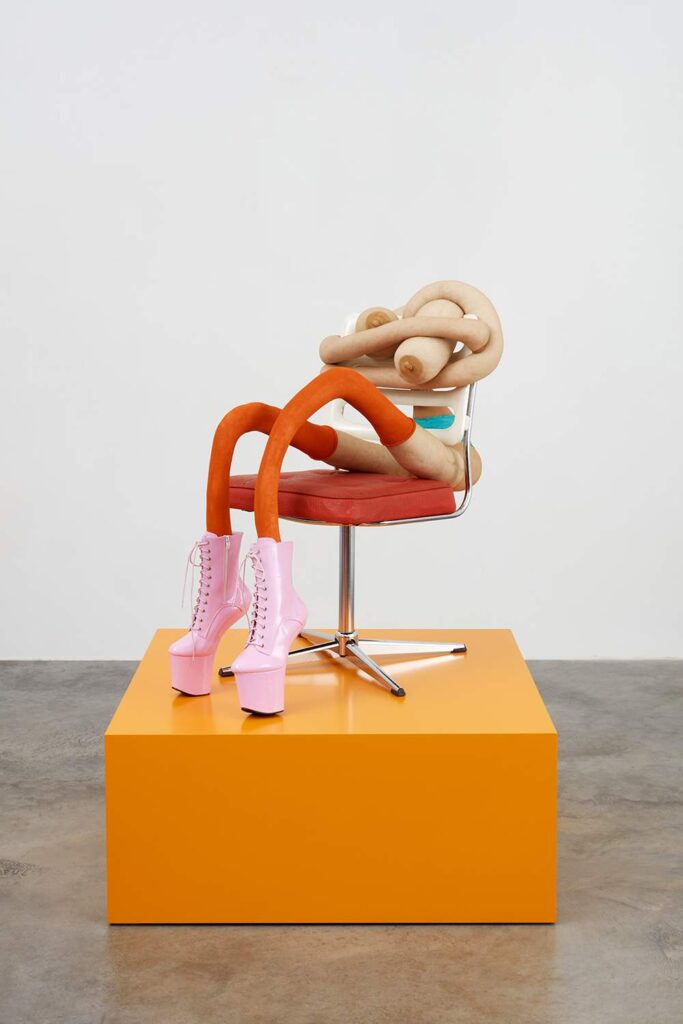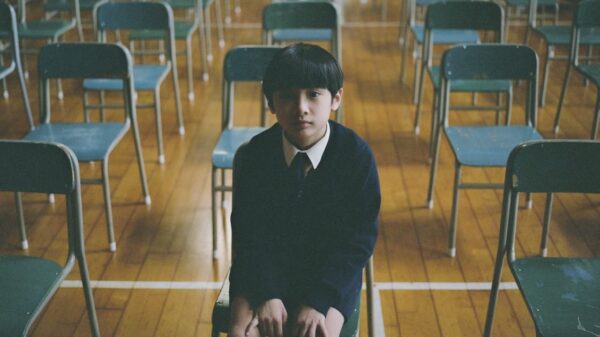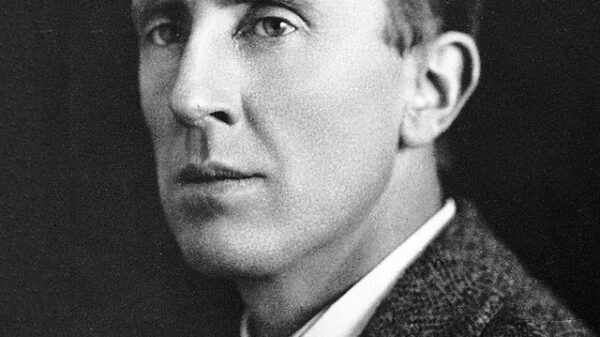Staff writer Cecilia Gerber gives her insight into the world of ‘manspreading’ and chairs through Sarah Lucas’s recent exhibition at TATE Britain.
In 2015 ‘Manspreading,’ was added to the online Oxford dictionary. Given how deeply ingrained this word is in our lives, reiterating its definition would be unnecessary. For many, this phenomenon becomes more relevant when using public transport. After a long workday, you rush onto your carriage to find yourself a comfortable, padded and free seat, waiting for you. You sit down and make yourself at home. Suddenly, the space in which your knees rest is infringed by the invasive manspread. To manspread back, in retaliation as a woman is simply out of the question. For starters, women’s clothes rarely even permit this. Either our trousers are too tight, or our skirt is too short or there is that pesky ladder in our stockings. Then there is the weighted statement that governs society, that polite women ‘shut their legs,’ otherwise suggesting promiscuity. Suddenly, with a little more thought, the ugly patterned Elizabeth line chair you sat on has taken on a powerful and slightly disturbing meaning.
This brings me to the artist Sarah Lucas. I first discovered her at sixteen, when studying photography. It was her photo Self Portrait With Fried Eggs, that snagged my attention. She sits, with her legs far apart staring directly into the camera with two eggs placed on her chest. It was unnerving, confrontational, but most of all it was amusing. It was my first venture into a world of feminism in which we, the viewer can laugh along with the artist. And most importantly, she was rewriting the way in which a woman is allowed to sit.
It was one of her earliest pieces of work, in the 1990s when she was part of the Young British Artists group along with artists like Damien Hirst and Tracy Emin. Her ‘subversion to social realism points to what is both laughable and demeaning about class and gender stereotypes.’ Driven by intrigue of the underlying misogyny in modern British life, Lucas’s work plays with what has begun to cement itself as normal; the swearwords and banter flung around by rowdy men, or the shocking content of tabloids.
Emin and Lucas rose to fame when they established ‘The Shop,’ in 1993 after attending Goldsmiths College. Beginning to create sculptures out of anything they could get their hands on, it shaped Lucas’ style, as she says “what I look for in materials is readiness. Something I can get on with in a spontaneous way and just do it myself.” They would quickly chain smoke a packet of cigarettes so that Emin’s could make bunny figurines, or march around Bethnal Green so that Lucas could find a pair of cheap tights for her next piece.
Now in her sixties, Tate has released a retrospective for Lucas titled ‘Happy Gas,’ which ‘brings together more than 75 works spanning four decades, from breakthrough early sculptures and photographs to brand new works being shown for the first time.’ It is arranged within four rooms, following a sexual exploration narrative, not necessarily auto-biographical or chronological, but linear in its way of telling a story from birth to death. What intrigued me the most however was that the strongest motif; chairs. These everyday, domestic pieces of furniture, which are rarely looked at twice are the centre of Lucas’s radical no no-nonsense, anti-patriarchal views.

The first piece I saw when entering was The Old Couple, made in 1992. Stuck on two wooden chairs is a wax penis and opposing it a set of old teeth. It plays upon stereotypes of an aging heterosexual couple, a woman defined by her perhaps incessant nattering, and a man by his prominent genitals, unable to progress from their old habits and their diminishing desire for each other. But what struck me was what little space Lucas used in the process. The defining props were overwhelmed by the chair. This is where Lucas’ imagination chimes in, writing she feels that “empty chairs are implying a body. It’s their meaning. Individual chairs have their own character too.”
Further along in room one there was Max’s Wanking Armchair. Expecting to see Max, all I found was a mechanical arm moving up and down from the chair itself. And although the arm is small in comparison to its body, its presence was undeniable. Despite having little space this masculine action was fighting for the viewers’ attention. It felt as though Lucas was conveying that when the roles are reversed, when men are the ones not occupying space, they will still persevere to be relevant.
Now reflecting on the chairs as not only just being a stage for which the sculptures are placed on but actually taking on its own meaning allowed me to view room two with an entirely new perspective. This room was solely dedicated to Lucas’ Bunnies, ‘soft sculptures made of tights filled with stuffing, reminiscent of human bodies’, placed namely on what seemed office chairs. The Bunnies, spanning over twenty-five years of Lucas’ career all come with charming names, such as Sex Bomb, Slag, and Goddess. Some are posed provocatively, poised in a performative manner like showgirls in your local strip club. Others were wrapped around the chairs or tucked away with childlike innocence or crushing desperation. Each one is telling a different story, either one of sadness, anger or seduction. But each one refuses to take up too much space, or too much attention away from the chair it is on. And, of course, not one is ‘manspreading’.

To think of the chairs as characters in their own respect, separate from the bunnies, made me wonder whether they were the accusers of the story. That each bunny is sat on a metaphorical lap of their oppressor, either scared of them or performing for them. None of them were particularly comfortable to look at, nor inviting. They are strong, structured, permanent, whilst the bunnies are soft, flimsy, unstable. It reminded me of a nightmare I once had, being stuck in a building full of suit cladded men, all spinning around simultaneously on their chairs, demanding I either strip or leave.
I was left to wonder whether there was any significance to the mid-century Wall-Street-like furniture. Was there simply a surplus at the skip? Materials Lucas could use spontaneously? I drew back to one of Lucas’ biggest influences, Andrea Dworkin. A radical in the 80s, and still considered radical today, she wrote scathingly about women’s rights, pornography, sex, politics. Unafraid to criticise the left and the right, bitter reviewers often were quick to label her as a ‘man-hater,’ and that she was ‘anti-sex’. But for Lucas, Dworkin was her enlightenment. Feeling slightly failed by her previous education, Dworkin’s writings acted like Lucas’ fairy godmother in the world of stubborn feminism, saying in an interview ; “It made me realise, purely and simply, that there are many different ways to look at anything.”
One symbolic reference to Dworkin through Lucas’ art is The Old Couple. It gives a not-so-subtle nod to a theory of Dworkins’, most present in her chapter ‘Possession.’ Dworkin explains that despite the penis being inside the vagina during intercourse, the vagina will never be able to have possession over its counterpart. The Freudian anxiety of castration is exemplified when the vagina is housing the penis. Which is where the imagery of a vagina with teeth was born. It poses as a threat. To a man’s masculinity, when he is at his most vulnerable. Now Looking at The Old Couple, its clear to see who’s on the menu for dinner.
Dworkin’s most controversial article was Dear Bill and Hillary, written in 1998, fresh after the Clinton-Lewinsky scandal. Shamelessly she proposes the idea that Hillary should pull the trigger on her old ball and chain, despite the fact ‘it would probably bring the FBI,’ knocking on her door. But most importantly, Dworkin highlights the problematic nature of the issue that at the time people were hesitant to investigate, that it was clear evidence of abuse of power. She writes that Lewinsky “has [her] sympathy. Of everyone who is a player in this game, she is the one who is going to be destroyed by it”. And even if the affair was acceptable in the eyes of the law, Lewinsky was half Clinton’s age, working as an intern for no money, disrespected by her co-workers. She was exploited by not only her boss but the president of the United States, inside the Oval Office. An office that probably doesn’t look too dissimilar to the one Lucas creates.
We cannot be sure if Lucas had Lewinsky in mind when she was creating one bunny from the next. But that is of little importance as it takes little imagination to see Lewinsky as a bunny herself and being treated like one. Dworkin spoke out of a story that has happened time and time again, of men abusing their position of power, and of women being harassed or assaulted in the workplace. Just looking at the statistics from ‘Stop Street Harassment’, is enough to see this, reporting that 38% of women have been harassed in the workplace. Another survey by ‘ABC and Washington Post’ found that 95% of harassers went on unpunished.
Chairs and our body language are surprisingly less common metaphors within feminism than you might think. In 2019, Laila Laurel from Norwich created ‘Anti Manspreading Chairs,’ leading her to be awarded the Belmond New Designers prize. Playing with humour and gender issues, she says: “My research is not intended to be something serious or combative. But I do believe that these chairs give a physical form to a problem that women suffer in a fun and literal way.” One chair, for women, encourages the spreading of the legs, whilst the other for men keeps them shut.
The year before, Design graduate Anna Aarged Jensen created a series of large strangely shaped pink chairs titled ‘A Basic Instinct,’ inspired by the iconic Sharon Stone moment where she redefined ‘manspreading,’ totally commando. Men are not allowed to use the chairs as Jensen says that the design conveys “the complexity of the woman – we are more than just one thing,” with the aggressive shape and widespread legs contrasted with the sensual pink blush adorned on the sculpture. Like Lucas, their art represents the sexism of the everyday with the mentality that allows us to laugh at the ridiculousness of misogyny too.
In all honesty, I looked down earlier today when writing this article, to discover my legs were crossed. In fact, I probably spend at least 80% of my life with them tangled up with each other. I don’t think Lucas would be particularly impressed. But to dismantle ideas that have now become habitual to us, to rethink our body language as well as language can be difficult. That is why the rehashing of artists such as Sarah Lucas, and the writings of Andrea Dworkin are essential. Second-wave feminism consisted of constant questioning whilst appreciating the jokes we can make along the journey. We are allowed to challenge everything, accept nothing, manspread, shut your legs or do a Sharon Stone and leave them wide open for the whole world to see. It’s up to you on how to deal with internal inquisitions. But it is still important for us to notice and voice things that don’t seem right to us, big or small.
















